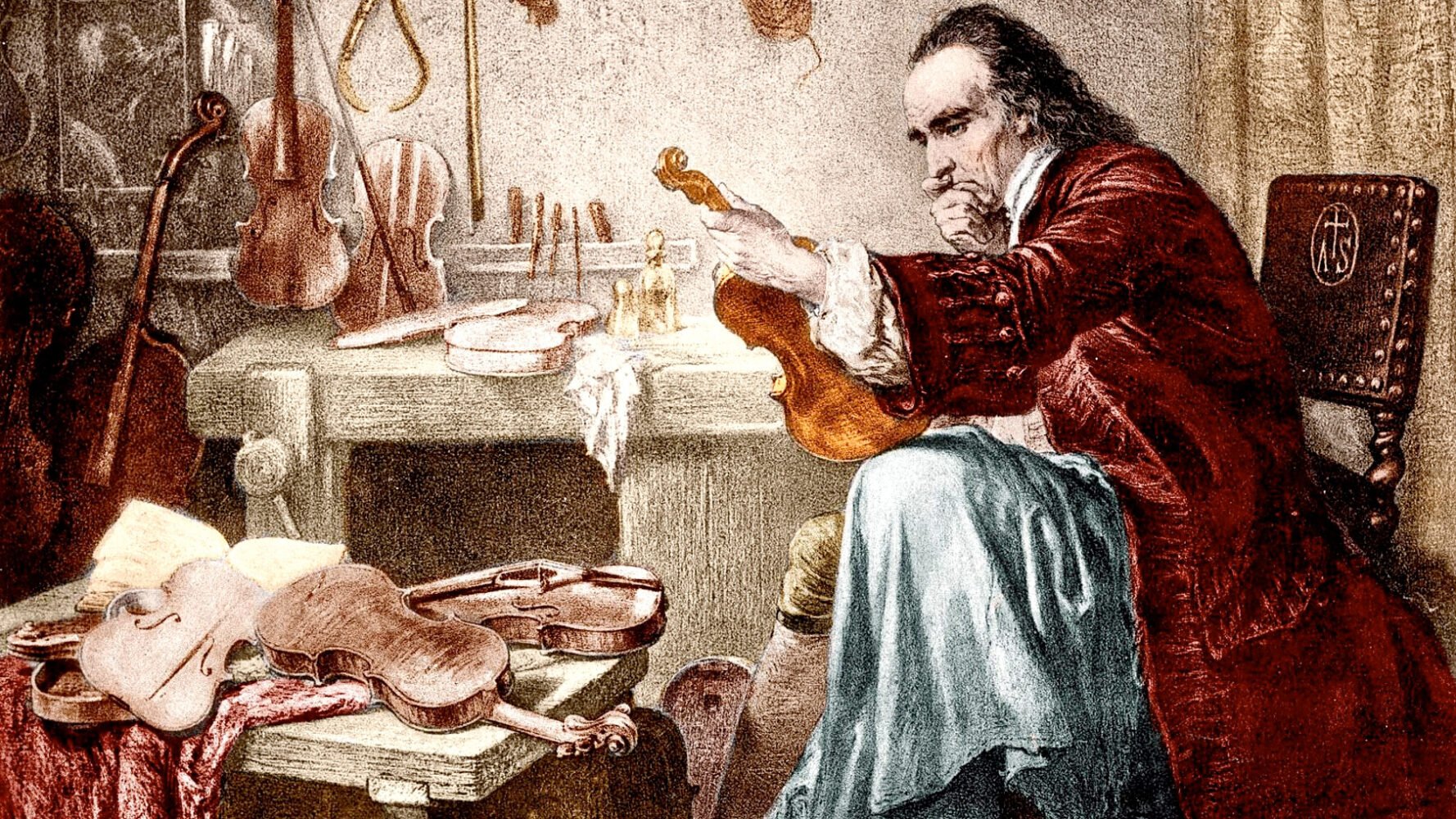
Antonio Stradivari
What’s the deal with Stradivarius?
No, seriously... what’s the big deal?
Much like Rolls Royce, the name “Stradivarius” continues to be synonymous with timeless elegance and luxury. These are the instruments that make the news: famous violins worth millions of dollars, loaned out only to the world’s top soloists. They are revered for their stunning beauty and sound. They are the subject of constant studies, from CT scans, to experiments determining their chemical makeup, and extensive family trees.
These prestigious instruments were created by Antonio Stradivari during a time now referred to as the “golden era” of violin making. From roughly 1660 to 1750, Italian craftsmen like Stradivari, Andrea Amati, and Giuseppe Guarneri standardized how violins were made, finding what some consider to be best techniques for the craft. The creations of Stradivari, his mentors, and his contemporaries, are now highly sought after.
It was these artisans' discoveries that paved the way for classical music to sound the way it does today. Along the way, they inspired scores of instrument makers, up to today's practitioners, like Elina Kaljunen and Daniele Scolari. Yet try as people might, no one has been able to accurately replicate the sound of a Stradivarius.
Another element of their mystery is the growing rarity of these instruments. Antonio Stradivari initially created many things: violins, violas, cellos, and even guitars and lutes! However, the majority of his instruments were lost over time, leaving us with only a handful of the most famous ones. Most of these are violins. They bear nicknames reflecting their history: from the “Messiah” violin which was promised but never arrived, to the “Lady Blunt,” named after one of the violin’s first owners.
Legends like Stradivariuses can't help but grow over time. To sort out what still rings true, we sat down with Bein & Fushi Senior Sales Executive John Gerson. Bein & Fushi is a notable violin shop in Chicago, with a history of selling and renting priceless instruments — many from the “golden age” of violinmaking — to many of classical music’s most renowned artists.
WFMT: Let’s start with the main question: What’s the big deal about Stradivarius instruments?
John Gerson: Well, I guess it depends who you talk to! They are appealing on multiple levels.
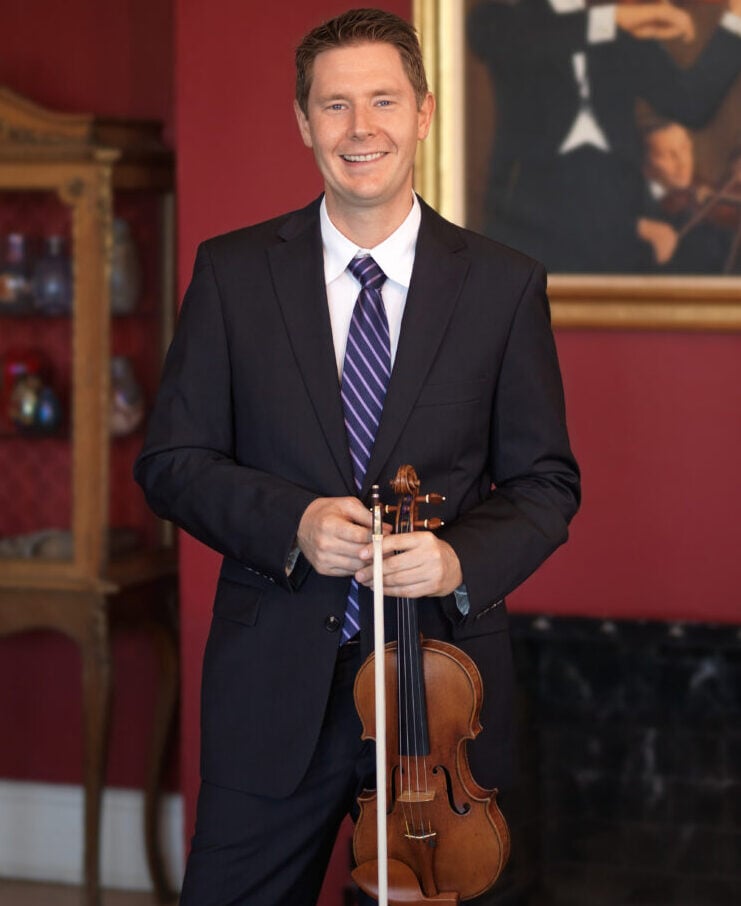
John Gerson of Bein & Fushi (Photo: Matthew Tolzmann)
If you're lucky enough to be down the street at Symphony Center or at Carnegie Hall, chances that one of the great soloists on stage will be playing either a Stradivari violin or a Guarneri del Gesù are pretty high. I think it's simply the best vehicle for these artists to be able to say what they want to say to their audience.
There are multiple reasons for this. The violins, number one, have unbelievable power in projection. It can be used in something like a Mozart concerto, where it's a little bit smaller orchestration… or something like a Bartók concerto with a huge ensemble.
The other part of it too is they have an incredible response. Being a violinist myself, we use this word “response” to mean two things. Number one: when you move the bow on the violin, how quickly does a note speak? That's one thing. The second kind of response that we think about, one that's very special with Stradivari violin, is when you attempt to make a different color or make a different statement on the violin, how does the violin respond?
Stradivarius violins are incredibly responsive and sensitive to the slightest change in bow pressure, bow placement, vibrato, and so on. If you're an artist that has a wide imagination, it gives you basically an infinite palette of colors and qualities. I can tell you from firsthand experience. I'm a competent violinist. I can play some notes, but when I get to hear a Stradivarius in the hands of somebody that can really drive it… it's spectacular to see what's possible.
It's kind of stunning that these violins made in the 16th and 17th centuries are still the preferred vehicle for people to be playing concertos written in the 2000s and 2020s. They're still the best that can be achieved on the violin. So it's kind of remarkable.
WFMT: Is there any truth then to the saying that Stradivarius instruments are “quiet under your ear but loud in a concert hall”?
Gerson: Well, I do think it's a myth… but you know, I can be fooled. I have played some contemporary instruments that sound huge under the ear, like a trumpet, and you get into the hall and… it's not that it's not loud, decibel-wise, but something nonetheless gets lost in the sound.
I'll never forget hearing Maxim Vengerov play Sibelius Concerto in Orchestra Hall when I was a student, sitting up in the cheap seats. It starts off with a rather soft and delicate dynamic. He was playing this dynamic on the page, but there was a focus and a kind of a laser-like quality to that sound that projected in a hall. Even when it's not written forte, fortissimo on the page, the Stradivarius violin has this incredible focus of sound.
For an artist, this is a wonderful quality. I think there are plenty of instruments that you can play, that you can kind of lay into and get a big sound. But then these same instruments, when you try and play more delicate passages, they give a bit of an airier, surface sound. With the Stradivari, the same focus that you have in a fortissimo section, you also get the same quality and focus and sound when you're playing in soft dynamics. In the most cantabile passages, you can still have every last bit of quality.
I think some lesser instruments… you feel like if you're not playing mezzo piano or louder on them, that somehow the sound is suffering.
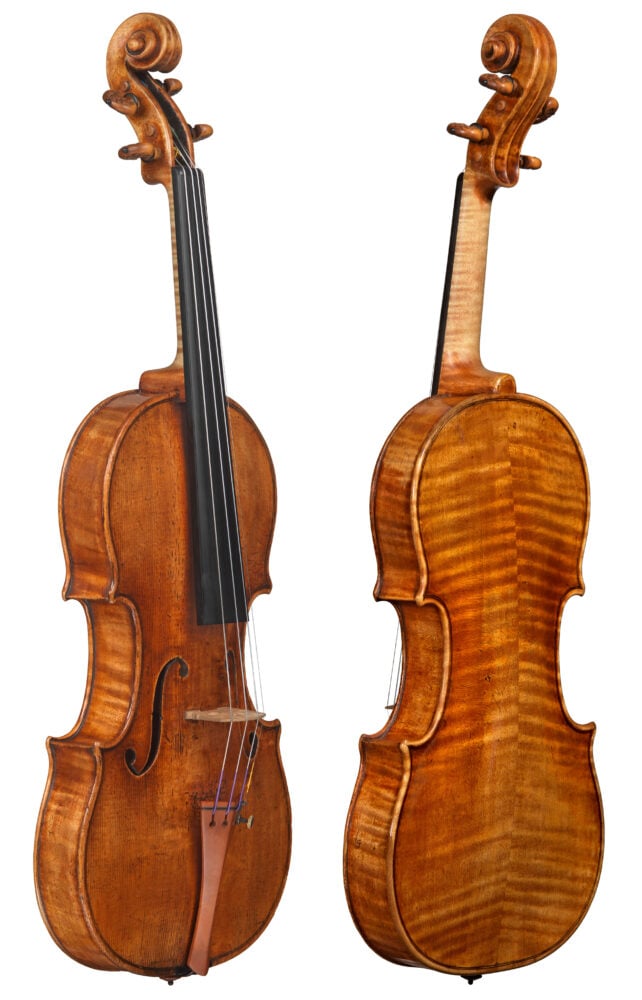
A 1717 Stradivarius violin, known as the Reifenberg. (Photo: Matthew Tolzmann, courtesy Bein & Fushi)
WFMT: To what extent are these qualities that you’re talking about limited to just Stradivarius instruments? Is there something about any older instrument that makes them superior to contemporary ones?
Gerson: You know — everything that we talk about with old versus new, even old maker versus old maker, it's all kind of generalized. There are some wonderful contemporary makers; I think the contemporary making now is fantastic and wonderful. And each of these instruments, even within Stradivarius’ output, they're individual instruments.
One thing I’ve found is that some of the old instruments — maybe they share a sweetness and a sensitivity that a Stradivari might have. But ultimately, they don't quite have the horsepower. You probably wouldn't want to play Brahms Concerto with the Chicago Symphony using these instruments. Or if you did, it would be a fight.
Later on, you do have violins that have wonderful power and projection, but that are maybe lacking some of the subtlety. With Stradivari, it feels like you don't have to compromise on either end. It has as much power as one would expect from the greatest 19th century instruments, with the same incredible complexity as Niccolo Amati and these great old makers.
And the other thing we'll never know is — what did the Stradivarius sound right off the bench?
Violins can feel a little bit stiff when they're right out of the workshop with a brand new bridge and sound post. After a while they start to loosen up and they play a certain way. So a violin that's had the benefit of being played on for 300 years is going to behave differently than something that's brand new off the bench. Unless they invent a way for us to live 300 years, we're never going to know what the benefit of time will do for the great violins of today.
What people also have to remember is that these people — Stradivari and Guarneri and some of these other makers — I think they were geniuses. And it's kind of like…well, you can give me the same violin and the same bow and the same sheet music that Jascha Heifetz used, but Heifetz was a genius. You can listen to the recordings; you can try to copy it. You can make a really good version of what he did, but it's still not him.
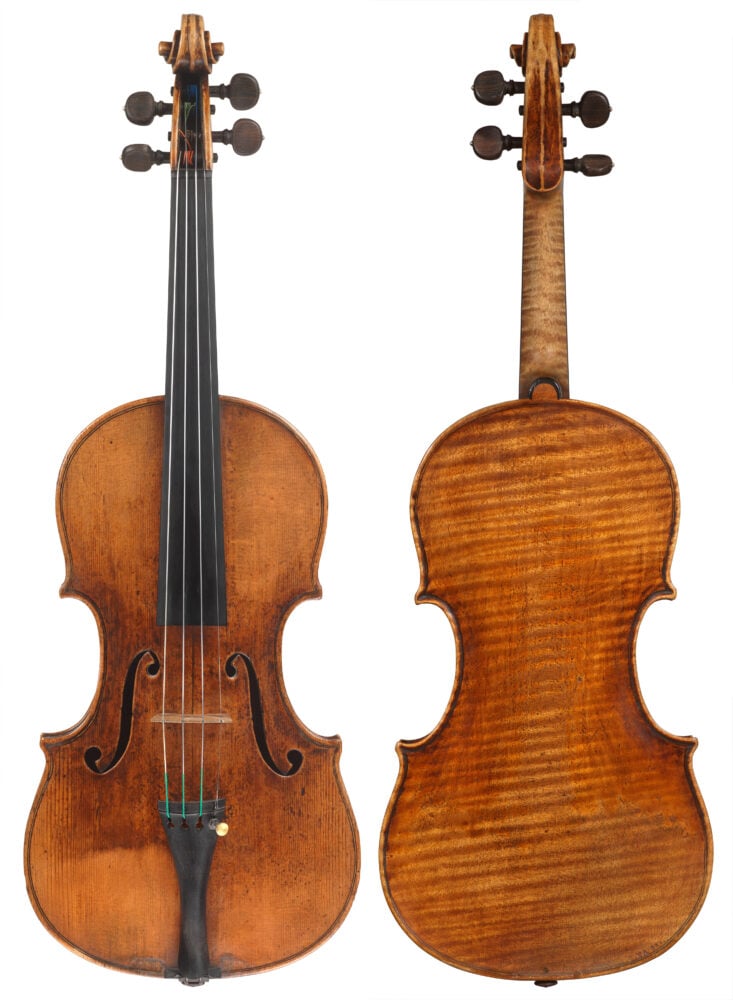
A 1742 Guarneri del Gesu violin, known as the "Wieniawski." (Photo: Matthew Tolzmann, courtesy Bein & Fushi)
I think it's a bit like this with these makers. The level of making is probably higher than ever as far as the number of good makers, but it's an impossible standard to live up to. Just like there's plenty of room for other great violinists, there's plenty of room for other makers. I think people can kind of worship at the altar of Stradivarius while still acknowledging that there's other wonderful makers, including contemporary makers.
WFMT: Speaking of worship… how much of Stradivariuses’ legendary status is inflated, or at least influenced, by its own mythology?
Gerson: Yeah, absolutely. When you look at the history of an instrument and you see it was owned by royalty, or played by this famous player: of course you can't help but be influenced in some way by that.
The psychology behind it is very powerful. For example, they've done these blind tests to see if players can identify a Stradivarius by sound. I can tell you from working in this business: when I see, hear, and play a lot of violins, it can be confusing to decipher what's what. When you have six or seven good violins on the table and you start to think, “I know there's one Strad in there…” your mind starts playing games with you.
Like when the “Wieniawski” Guarneri del Gesù was here in the shop. When you're playing on it, you can't help but think, “Man, was this the violin Wieniawski had in his hands when he was composing his violin concertos?”
It's a very mythical thing to have these violins that are not only incredible concert instruments but also parts of history.
WFMT: And let’s not forget how much history these violins have experienced as well! What folks might not know is that many of these rare instruments, like Stradivari, have had to undergo multiple repairs in order to still be playable. Are there any Stradivarius instruments left that are 100% original?
Gerson: Because there's so few of them, and there's such a value and need for them, I think there's basically no limit as far as the lengths people will go to retain these instruments. For example, if you had a violin that was a known Stradivari, that for some reason got in some horrible accident and was essentially a toothpick collection, it would be worth repairing and putting back together.
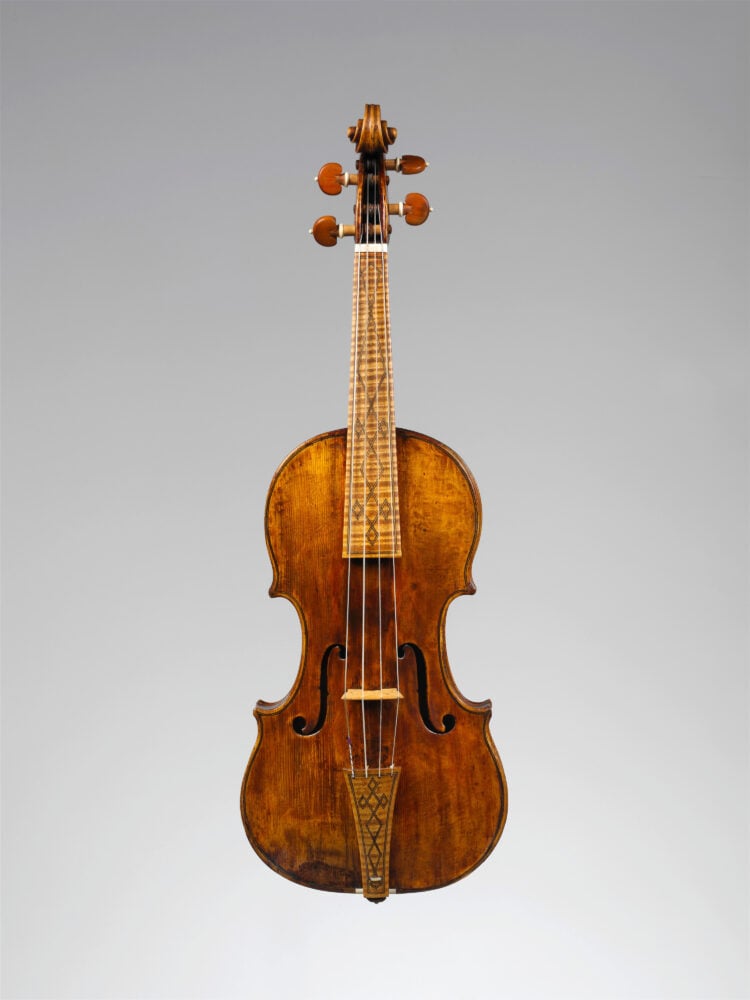
A 1669 violin by Niccolò Amati, a revered maker who taught Antonio Stradivari and other preeminent luthiers. Via Metropolitan Museum Digital Collections
But as for completely original instruments… there are violins that still retain their original necks… a lot of original varnish… I can't imagine original strings are possible. It may be, you know, original pegs, original tailpiece, things like this. Original bass bar could be possible: I know there's a few.
Hm. The “Messiah” Stradivari that's in the Ashmolean Museum, and the “Lady Blunt” Stradivari: those are two that were really well-maintained, and that's about as close as we'll get to seeing what the violins looked like off the bench, especially in varnish (which tends to degrade the most over time).
A lot of contemporary new makers, they make a violin that they call “antiqued”, which means even though it's new, it's supposed to look old. But if you were to see one of these two violins — the “Lady Blunt” or the “Messiah” — it's kind of shocking that it's a red varnish. We don’t see that often. Over time, it's how a violin naturally ages.
I think people have in their head what a violin is supposed to look like, because of what Stradivarius violins look like.. But they only look like that because that's what 300 years of wear does. The violins that started off as being “antiqued” today, what’ll they look like in 300 years? I don't know. That would be interesting to see.
There are few and far between examples of Stradivari that are still maintained in this nearly original state of preservation. I remember before I worked here and was just a musician I thought, well, what a shame! They should all be played! But now, with a bit of experience behind me, it’s an amazing thing to have and to preserve this way. Antonio Stradivarius was an icon of western music making. If we do have a few examples of his that are basically untouched, I think it’s worth keeping: to enjoy, to document, and to understand from a more academic perspective.
This interview has been edited for length and clarity.






